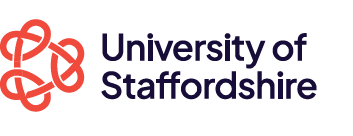Module Descriptors

OPERATING SYSTEMS AND NETWORK SECURITY
COMP70055
Key Facts
Digital, Technology, Innovation and Business
Level 7
20 credits
Contact
Leader: Samuel Onalo
Email: samuel.onalo@staffs.ac.uk
Hours of Study
Scheduled Learning and Teaching Activities: 52
Independent Study Hours: 148
Total Learning Hours: 200
Pattern of Delivery
- Occurrence A, Stoke Campus, PG Semester 1
- Occurrence B, Digital Institute London, PG Semester 1
- Occurrence C, Digital Institute London, PG Semester 2
- Occurrence DD, Asia Pacific Institute of Information Technology Sri Lanka (Colombo), PG Semester 2 to PG Semester 3
Sites
- Asia Pacific Institute of Information Technology Sri Lanka (Colombo)
- Digital Institute London
- Stoke Campus
Assessment
- WRITTEN REPORT - 3000 WORDS weighted at 50%
- PRACTICAL ASSESSMENT - 1 HOUR weighted at 50%
Module Details
Indicative Content
This module covers the following topics:
Core technologies and sub-disciplines in the OS and Network Security area
Advanced Networks and Operating System Security aspects and technologies
Firewall technologies
Configuring advanced Authentication, Authorization, and Accounting (AAA) features
Deploying and managing VPN solutions
Latest security industry recommendations and standards
Risk assessment and evaluation of factors
Protection and hardening of Windows and Linux servers in a variety of settings and roles
Cisco technologies and materials
White papers and emerging research in OS and the Network Security discipline
Core technologies and sub-disciplines in the OS and Network Security area
Advanced Networks and Operating System Security aspects and technologies
Firewall technologies
Configuring advanced Authentication, Authorization, and Accounting (AAA) features
Deploying and managing VPN solutions
Latest security industry recommendations and standards
Risk assessment and evaluation of factors
Protection and hardening of Windows and Linux servers in a variety of settings and roles
Cisco technologies and materials
White papers and emerging research in OS and the Network Security discipline
Additional Assessment Details
Written Report – A research report demonstrating understanding of key concepts and an ability to critically analyse information obtained in relation to the module (Learning Outcomes 1 and 3).
Practical Assessment – A practical skills demonstration to display the student’s ability to conduct the implementation of the technologies that they have studied in the module (Learning Outcomes 1 and 2).
Practical Assessment – A practical skills demonstration to display the student’s ability to conduct the implementation of the technologies that they have studied in the module (Learning Outcomes 1 and 2).
Learning Strategies
The module will be delivered using a combination of independent research, lectures and tutorials. The lectures are intended to give the theory work and the tutorials are an opportunity to test out the theories. The lectures are based on the official Cisco material but have been adapted for student needs. Students will be also provided with a lab manual which they can work through in the tutorials.
Learning Outcomes
1. DEMONSTRATE A SYSTEMATIC UNDERSTANDING AND CRITICALLY EVALUATE VARIOUS NETWORK AND OPERATING SYSTEM SECURITY STRATEGIES.
Knowledge and Understanding, Analysis
2. INSTALL, CONFIGURE AND EVALUATE NETWORK SECURITY TECHNOLOGIES BASED ON GIVEN SECURITY POLICY AND NETWORK REQUIREMENTS, ACCORDING TO INDUSTRY STANDARDS USING COMMERCIAL EQUIPMENT.
Problem Solving, Communication, Application
3. DEMONSTRATE CRITICAL ABILITY TO RESEARCH, IDENTIFY AND IMPLEMENT VARIOUS OPERATING SYSTEM SECURITY TECHNOLOGIES IN ORDER TO COUNTER OPERATING SYSTEM VULNERABILITIES.
Application, Problem Solving
Texts
The National Cyber Security Centre (2019) CyBOK: The Cyber Security Body of Knowledge. Version 1.0. The National Cyber Security Centre.
Neto, S, (2021), AWS Certified Security Study Guide, Sybex.
Kanikathottu, (2020), AWS Security Cookbook: Practical solutions for managing security policies, monitoring, auditing, and compliance, Packt Publishing.
Nazmul R, (2022), CCNP Security Cisco Secure Firewall and Intrusion Prevention System Official Cert Guide
Comer, D. (2020), Operating System Design: The Xinu Approach, Second Edition, Chapman and Hall/CRC
Hussain, M, Q. (2022), A Journey in Creating an Operating System Kernel: The 539kernel Book, Independently published
Gerofi, B. et. al. (2019), Operating Systems for Supercomputers and High Performance Computing: 1 (High-Performance Computing Series, 1), Springer; 1st ed.
Neto, S, (2021), AWS Certified Security Study Guide, Sybex.
Kanikathottu, (2020), AWS Security Cookbook: Practical solutions for managing security policies, monitoring, auditing, and compliance, Packt Publishing.
Nazmul R, (2022), CCNP Security Cisco Secure Firewall and Intrusion Prevention System Official Cert Guide
Comer, D. (2020), Operating System Design: The Xinu Approach, Second Edition, Chapman and Hall/CRC
Hussain, M, Q. (2022), A Journey in Creating an Operating System Kernel: The 539kernel Book, Independently published
Gerofi, B. et. al. (2019), Operating Systems for Supercomputers and High Performance Computing: 1 (High-Performance Computing Series, 1), Springer; 1st ed.
Resources
Kali Linux penetration testing platform - https://www.kali.org/
Online Library Resources - http://libguides.staffs.ac.uk/libraryresources
Specialist networking laboratory with Cisco equipment including Cisco ASAs
Hosted hypervisors installed on lab machines
Online Library Resources - http://libguides.staffs.ac.uk/libraryresources
Specialist networking laboratory with Cisco equipment including Cisco ASAs
Hosted hypervisors installed on lab machines
Web Descriptor
This module focuses on aspects of advanced networking coupled with Operating Systems. The module is both theoretical and practical within its approach to topics. You will study firewall technologies, the AAA model (Authentication, Authorization, and Accounting), as well as VPN solutions. As final topics you will investigate the latest commercial approaches used in security, and look at the Windows and Linux Operating Systems in terms of security features.